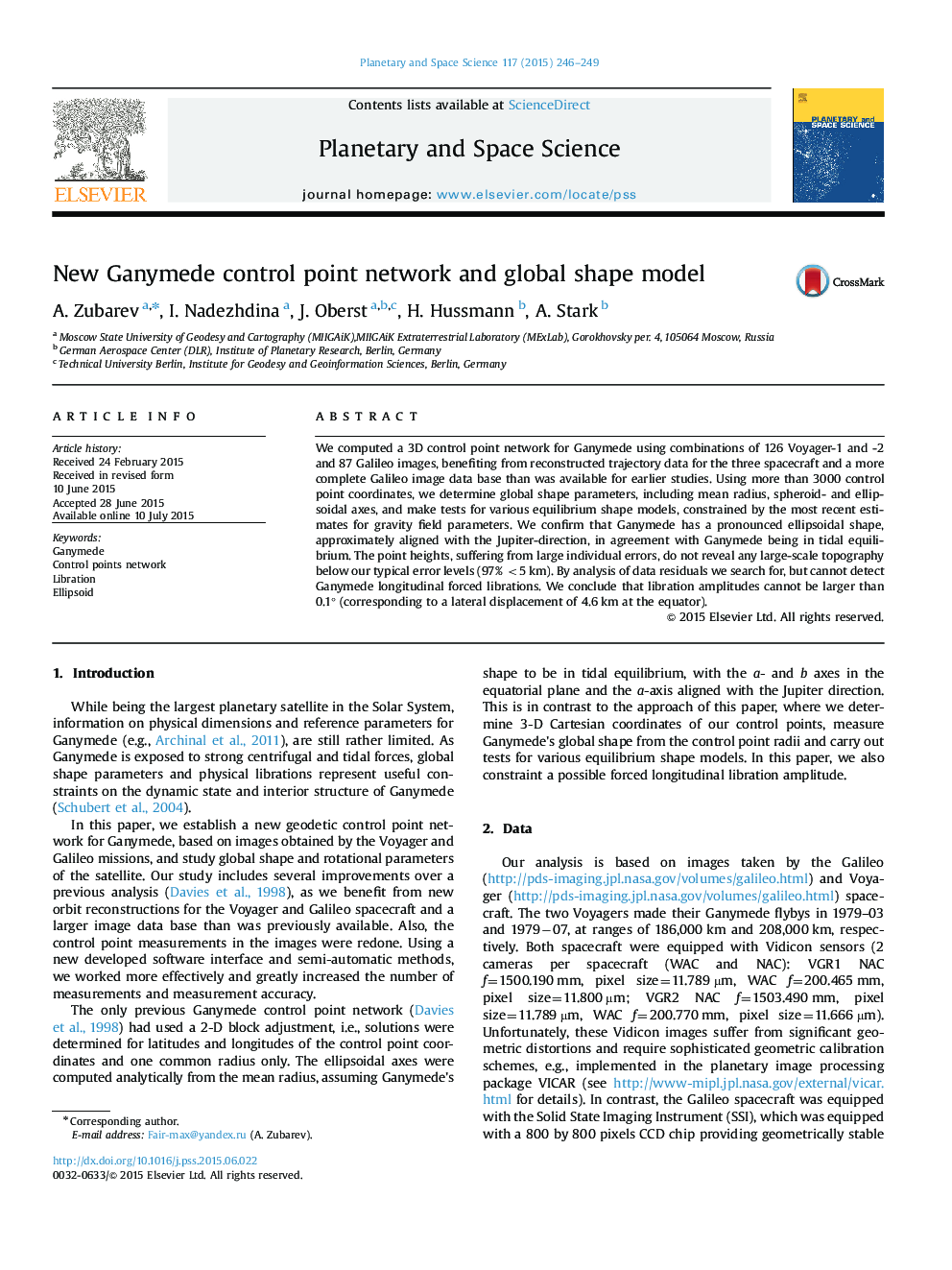| Article ID | Journal | Published Year | Pages | File Type |
|---|---|---|---|---|
| 8143089 | Planetary and Space Science | 2015 | 4 Pages |
Abstract
We computed a 3D control point network for Ganymede using combinations of 126 Voyager-1 and -2 and 87 Galileo images, benefiting from reconstructed trajectory data for the three spacecraft and a more complete Galileo image data base than was available for earlier studies. Using more than 3000 control point coordinates, we determine global shape parameters, including mean radius, spheroid- and ellipsoidal axes, and make tests for various equilibrium shape models, constrained by the most recent estimates for gravity field parameters. We confirm that Ganymede has a pronounced ellipsoidal shape, approximately aligned with the Jupiter-direction, in agreement with Ganymede being in tidal equilibrium. The point heights, suffering from large individual errors, do not reveal any large-scale topography below our typical error levels (97% <5 km). By analysis of data residuals we search for, but cannot detect Ganymede longitudinal forced librations. We conclude that libration amplitudes cannot be larger than 0.1° (corresponding to a lateral displacement of 4.6 km at the equator).
Related Topics
Physical Sciences and Engineering
Earth and Planetary Sciences
Geophysics
Authors
A. Zubarev, I. Nadezhdina, J. Oberst, H. Hussmann, A. Stark,
